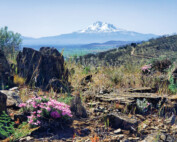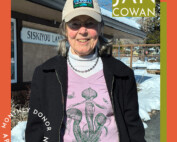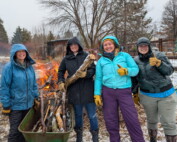A Community Effort for an Enduring Landscapes
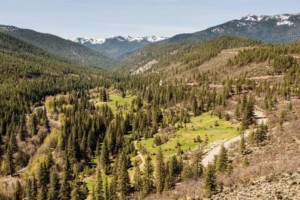
Siskiyou Land Trust is participating in a historic conservation collaborative with partners EcoTrust Forest Management (EFM) and Western Rivers Conservancy (WRC) on 40,000-acres of Scott River Headwaters forest in Northern California’s Mid-Klamath basin. This swath of forest makes up much of the Scott Valley viewshed where private timber lands abut Klamath and Shasta-Trinity forests. The project area is composed of four forest tracts , three of which are directly adjacent to wilderness areas (Marble Mountain Wilderness and Russian Wilderness), and one that are just downstream of the Trinty Alps Wilderness near Callahan. The forest includes a slice of the world’s most diverse conifer forest assemblage, 275 miles of headwaters stream, over 700 acres of alpine meadow, and several wilderness trailheads linking to the Pacific Crest Trail. This collective effort will help link 770,000-acres of designated alpine wilderness with 25,000 acres of conserved ranchlands in the Scott River valley below, further enhancing conservation values and climate resilience for all who inhabit and visit this vast landscape. To ensure permanent conservation, Siskiyou Land Trust must be able to provide for the organization to play its part, resources necessary to complete four conservation easements. As of May 2019, three of the four conservation easements have been selected for funding by State agencies. Siskiyou Land Trust and project partners will be submitting proposals for the remaining conservation easement this year. Siskiyou Land Trust is currently applying for grant funds and soliciting support to help us cross the finish line on this epic vision.
SLT’s Scott River Headwaters Forest Conservation Goals:
- Ensure permanent protection of Scott River Headwaters working forests through conservation easements that preclude subdivision, preclude conversion of forest land, protect streams, establish riparian corridors, identify special habitat and management areas to support species recovery and protection, support meadow restoration, support instream water projects for salmonids, provide public access to wilderness trails, and require forest practices that strive for late seral stage forest conditions to support old growth dependent species and habitat.
- Support landscape scale conservation and climate change resilience through protection of forest habitat corridors that link National Forest and wilderness with lowland valleys and their respective rivers and agricultural lands.
- Permanently protect the Scott River headwaters forest that supplies significant quantities of high quality water, habitat, open space, recreation, cultural resources, and economic opportunity in far Northern California’s Klamath-Cascade region.
- Seek support and partnership opportunities from diverse interests and places to ensure a successful campaign.
- Raise funds to support Siskiyou Land Trust’s ability to successfully accomplish this goal through increasing organizational resources and capacity.
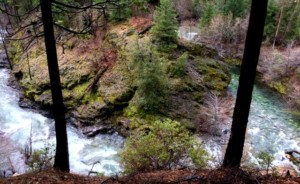 SLT’s Objectives:
SLT’s Objectives:
- Complete the Scott Rivers Headwaters Campaign within four years by SLT accepting four fully funded conservation easements that cover 40,000-forested acres.
- Secure $40,000 of grant funding in fiscal year 2019/2020 necessary for Siskiyou Land Trust to continue its role as the intended easement holder.
- Secure $80,000 in grant funding for fiscal years 2020/21 – 2021/22 necessary for Siskiyou Land Trust to complete the campaign with support from professional staff, independent legal counsel, and technical assistance.
- Complete the conservation easement terms and supporting Forest Management Plan, Baseline Report, GIS database updates, and Monitoring Plan in partnership with WRC and EFM for the three funded conservation easements by 2021;
- Secure funding for fourth conservation easement over the Shackleford/Big Meadows area (12,000+-acres) by 2020; and complete the conservation easement terms along with supporting Forest Management Plan, Baseline Report, GIS database update, and Monitoring Plan with EFM by 2022.
Why conservation easements? The proposed conservation easements are necessary for permanent conservation because our conservation partners EFM and WRC must repay short-term conservation loans used to purchase the land. The easements are also essential for permanent protection of these working forests because they act to shift forest management to restoration forestry for ecosystem resilience through a recorded deed. So no matter who owns and manages the land in the future, they must agree to steward the land with forest conservation goals as their guide. These working forest conservation easements do not allow the forest tracts to be further subdivided. This measure helps ensure that the forests will be large enough to manage economically and ecologically in ways that provide landscape benefits and local economy inputs. Decades of industrial management that took the largest trees for short-term profits in the project area will shift according to easement terms to a strategy that supports forest complexity, late seral stage forest components, ecosystem enhancement, wildlife habitat, and fire resilience.
Just as the easements are necessary for permanent conservation, so is the partnership between Eff, WRC, Siskiyou Land Trust, and a multitude of organizations focused on watershed health and community vitality. The projects could not be completed without each entity playing its role. The Land Trust will be the holder of the conservation easements, a role that began over a year ago and has continued through each step of the process. Our staff has and will continue to complete tasks throughout grant writing, project completion and then, annual monitoring and enforcement in perpetuity after the real-estate transactions are complete. While our partners are doing the heavy lifting to get the projects off the ground, SLT’s role is essential and equally important for ultimate success. As holder of the conservation easements, it is our duty to monitor and enforce their terms every year for the rest of time. We humbly accept the role of keeping our mutual conservation promises for the rest of time.


